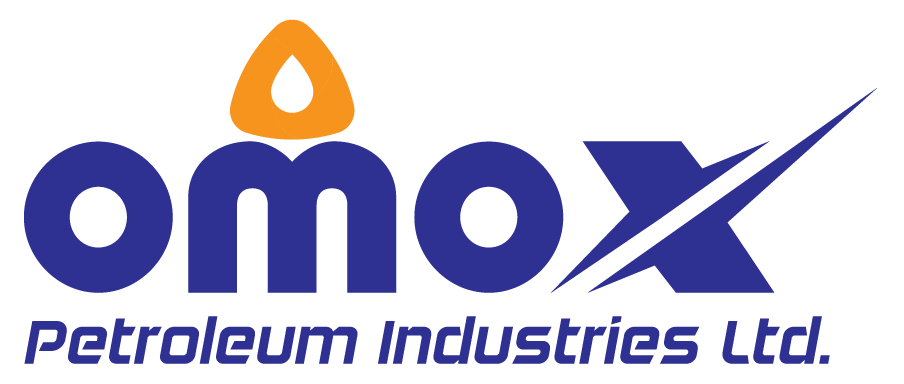THE HISTORY OF OIL
Based on your interests, you may have an unusual wealth of knowledge when it comes to a particular topic. In regards to the automotive (and even travel) industry, everyone learns about the invent of the wheel. If you’re a relatively big car fan, you may also know the history of your favourite brand or car type.
One background lesson that people don’t tend to know a lot about is the history of oil. Sure, you would assume it’s not a particularly interesting topic, but the history of oil dates back thousands of years, and there were plenty of trials and tribulations as engineers looked too perfect the product.
While you may have other things on your mind while your car shopping for car parts in Albany, New York you should recognize that the process and history of motor oil is actually pretty interesting and should be appreciated. While you’re waiting for your vehicle to be ready, take a look at how these motor oils came to be…
Oil has been around for more ten thousand years, as our earliest ancestors discovered various ways to lubricate their newest creation… the wheel. It was found that adding oil to the wheel made it much easier to push around, and people experimented with a variety of different concoctions as they sought perfect. They started with oils from animals, particularly roast deer fat and boiled pig, and they soon moved on to vegetable oils.
That was until the realization that black gold deposits could be turned into crude oil, which revolutionized the production of moving vehicles.
Early cars utilized the slippery crude oil to help protect the various metal parts of a car, but that was basically the only similarity between these early vehicles. Manufacturers used their own fuel and lubrication techniques, leading to inconsistencies and failures.
As automobiles became more and more common In the early 1930s, these car makers realized the need for standardization among their vehicles and oils. The Society of Automobile Engineers in the USA soon began this process with a focus on engine oil, deciding to classify oils by their viscosity, or the speed at which the liquid pours.
They tested various oils at 100°C (chosen because that was the temperature that oil often reached in a highly-stressed, big end bearing), and SAE 30 was ultimately recognized as the standard engine oil. Oil and petrol soon became one of the most in-demand consumables in the world.
Manufacturers did additional testing during World War II. As they recognized, admired and envied the power of airplane engines, the car makers were constantly seeking ways to increase car engine speeds and bearing load. This meant that the new vehicles would need higher weight oils, but even the SAE 50 turned into a hot, thick sludge when the engine began to get out.
At the same time, plastic-producing companies were researching petro-chemicals. It was soon discovered that these chemicals had the ability to produce hydrocarbon polymers, and they subsequently learned that these polymers could prevent oil from thickening in the heat (while simultaneously not compromising the lower temperature viscosity.)
This led the way for the introduction of the ‘w’ rating test that is common today. This was used to determine the difference between pure oils and the modified fuels, and the strategy was quickly adopted as the international method for identifying different types of oils.
The introduction of more powerful engines and high speed highways meant that car makers needed to find better ways to protect car engines. These engineers ran into a handful of issues:
– The viscosity modifiers were discovered to disappear in high load conditions, reverting the oil back to it’s original grade.
– Fossil oils lost quality as they aged, and they were found to not mix well with fuel residues. This resulted in lower lubrication and protection qualities.
– Due to the issues above, oils needed to be changed constantly.
Once again, these car makers continued to eye the war effort. The first use of synthetic oil in automobiles was during the second World War. Mobil Process, a company that originated from the brand we know today, created Poly Alfa Olefins, or a group of plastics. These were used in tanks placed in the Africa desert, and the synthetic oil prevented the frying of engine oil and the subsequent seizing engines.
The synthetic oil was initially only allowed in turbines or prime-mover, low-speed diesels, but car companies soon realized how strong the liquid was.
Of course, the infatuation with synthetic oil didn’t last particularly long, but it had little to do with the quality. Instead, synthetic oil’s temporary demise came at the hands of imposters.
A particular non-mineral oil proved to be an excellent source for preventing wear on a car’s engine, but it also deteriorated the quality of the rubber oil seal. Another synthetic oil was produced with extremely low EP protection.
While both oils proved to be better than their mineral counterparts, these bootlegs were quickly criticized. Older engines suffered due to the oils’ inability to adapt to low temperatures, and the abuse put on the rubber oil seal resulted in many oil leaks.
For those who focused on producing a high-quality, usable synthetic oil, this was a slap in the face. The various rip-off oils failed to contain many of the properties that make synthetic oil so successful, and many of the additive oils (regardless of quality) suffered as a result.
You never thought there was such a vast history for motor oil, right? Many people take these lubricants for granted, not taking into account the years of research that led to a successful and productive product.
Why Omox Lubricants
With the advancement of technology, lives are supposed to be faster and smoother. The invention of the wheel added a new dimension to civilisation. People are more prone to maximise the speed, to discover the world in a quick manner and to save their precious time. Here comes the importance of lubricants to be used in engines to make it more dynamic. With the top-end services in lubricants, Omox petroleum industries ltd. cherished to serve the planet with next-gen lubrication technology. We know how quickly lubricants market need any product to be rendered. We committed to provide services that will surely surpass the expectations as we are matched in customer satisfaction. We motivated to make happy customers with world class products, high end service in fast & efficient way.
Finally, Omox petroleum industries ltd. vision to become a trustworthy hub of technical lubricants experts delivering highly competent lubricants and greases.

MISSION & VISION
Omox Petroleum Industries Ltd. believe in ‘Strive for excellence every day.’ Today, we are proud that customers have expressed overwhelming satisfaction to our Mexon Lubricants, PTT Lubricants & Omox Lubricants which is confirming feedback of the resounding success. In returns to show appreciation to our customers and to maintain its pole position, we are determined to serve them a new dimension of “lower price with high quality.”
In the coming days we will increase our market share in which we are doing business at present. We wish to become the leading manufacturer of the country in the field of lubricants & greases. We will strategically connect with selected retailers, distributors and users for mutual appearances in these markets, continuing extensive development and intensive upgrading our network of distributors and technical services for the full provision of the sales. Our attention will be most focused on commercial – technical services, which represents additional value for our users.
OMOX PETROLEUM INDUSTRIES LTD. SALES PROJECTION
We stand apart from the crowd in the lubricant market as we guarantee quality items alongside brilliant bundling. Furthermore, we guarantee the best estimation of value for money. With the state-of-the-art Omox Petroleum Industries Ltd., will relish the swiftness of the engine/ machine which will alongside make the journey easier and life happier.
Without further ado, get in touch with us as we offer –
- European standard products.
- Eco-friendly products
- Heavy-duty intact product packaging
- Safe products handling
- Competitive price
- Extended oil drain interval
- After-sales services
Keeping focus on 7ps of Marketing we are going to set our marketing & sales plan to meet our goal rapidly.
Their 1st comes the product, where we have to keep our eyes on quality, product mix, feature, technical details. Already we ensure the consumers of existing market that we serving a better-quality products of state-own brand PTT Lubricants & European brand Mexon Lubricants with technical verities and satisfactory services. With own blending plant setup, we will be going to reach lower grade market to higher grade market of lubricants and greases.
Motor oil
Motor oil, engine oil, or engine lubricant is any one of various substances that consist of base oils enhanced with various additives, particularly antiwear additives, detergents, dispersants, and, for multi-grade oils, viscosity index improvers. Motor oil is used for lubrication of internal combustion engines. The main function of motor oil is to reduce friction and wear on moving parts and to clean the engine from sludge (one of the functions of dispersants) and varnish (detergents). It also neutralizes acids that originate from fuel and from oxidation of the lubricant (detergents), improves sealing of piston rings, and cools the engine by carrying heat away from moving parts.
In addition to the aforementioned basic constituents, almost all lubricating oils contain corrosion and oxidation inhibitors. Motor oil may be composed of only a lubricant base stock in the case of non-detergent oil, or a lubricant base stock plus additives to improve the oil’s detergency, extreme pressure performance, and ability to inhibit corrosion of engine parts.
Motor oils are blended using base oils composed of petroleum-based hydrocarbons, polyalphaolefins (PAO), or their mixtures in various proportions, sometimes with up to 20% by weight of esters for better dissolution of additives.
Our GOALS
- Supply all kind of world standard lubricants & greases
- Meet the market demand of lubricants for agricultural machineries
- Meet the market demand of automobile sector
- Meet the increasing demand of industrial lubricants & greases
- Meet the sales & service support of power plant
